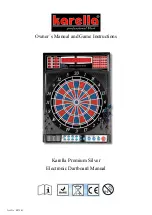
NovaLynx Corporation________________________________________________________________________________
200-WS-02E
Page 6
December 2018
4
SITING CONSIDERATIONS
WARNING: Avoid overhead power lines whenever possible. If there are overhead power lines, use
extreme care to prevent contact with the power lines while installing the equipment. NovaLynx
recommends using only experienced equipment installers to avoid injury and serious problems.
Choose a mounting location for the wind sensor that is free of obstructions since nearby objects can
create eddy currents that will affect the wind measurements. Try to locate the wind sensor so that the
nearest object is 10 x T away from the wind sensor mast, where T is the height of the object.
Roof mounted sensors should be placed on the upwind side of the building and away from all exhaust
vents. If the sensor is located on top of a building the sensor height should be 1.5 x H, where H is the
height of the building.
In all cases when the wind sensor data is to be correlated to National Weather Service data or World
Meteorological Organization data, the standard exposure is 33 feet (10 meters) above the ground.
5
TAIL ASSEMBLY
The tail piece must be assembled to the vane shaft before installing the sensor. Locate the tail piece
(packed with this manual). Remove the blue tape from the shaft and save the two screws stored there.
Slide the tail piece into the slot in the shaft and align the screw holes. Secure the tail with two screws
using a #1 Phillips screwdriver.
4-40 x 1/4 PAN PH SS
TAIL ASSEMBLY
Counterweight
Hub
Shaft
Tail
Vane setscrew
Potentiometer setscrew
(on opposite side)
Figure 1




























